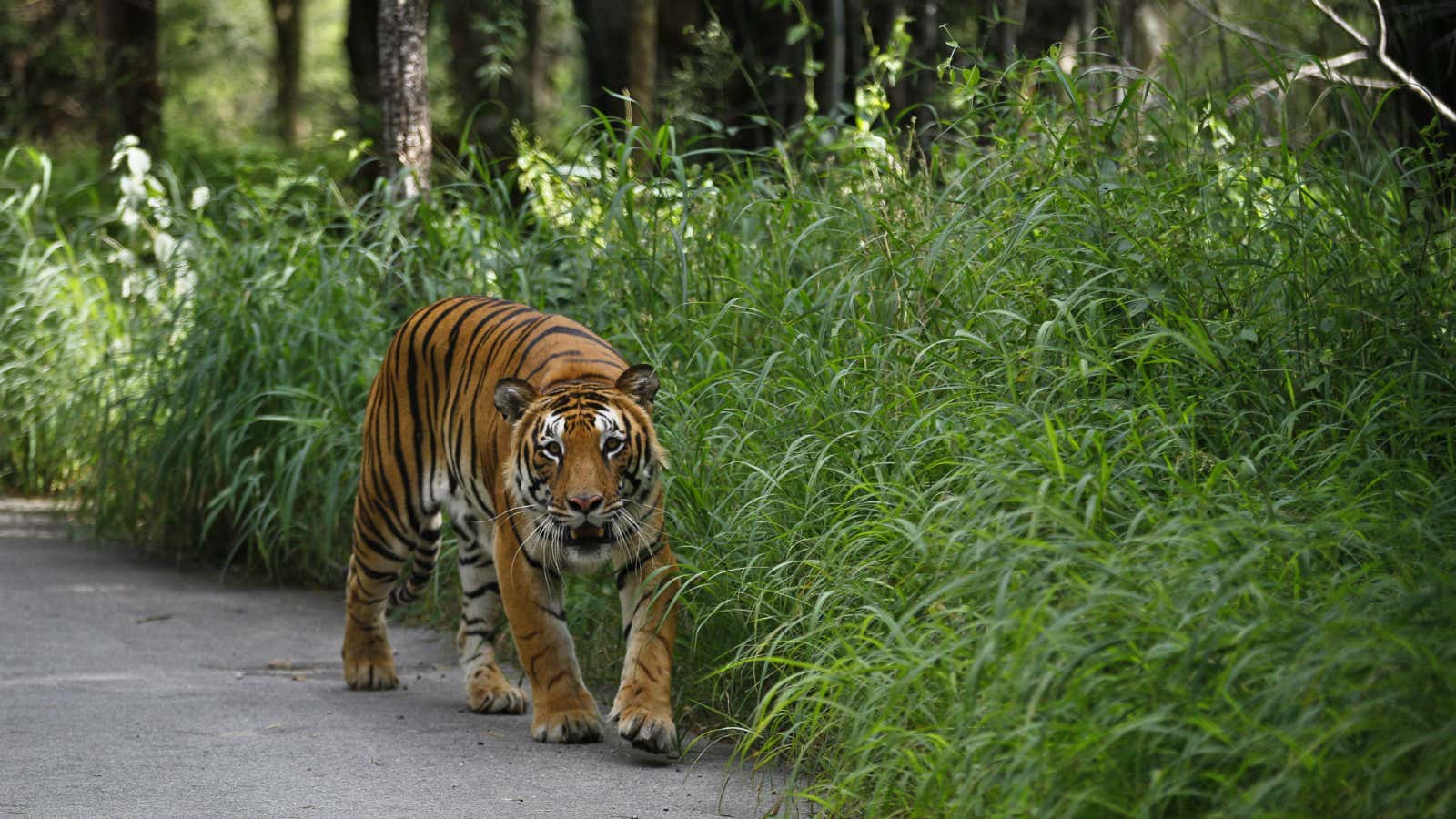India’s endangered tiger population has had no respite this year.
Up to Aug. 9, 41 tigers have died across the country in 2015, according to data from the National Tiger Conservation Authority (NTCA) and TRAFFIC India, a wildlife trade monitoring programme. In the same period last year, 42 tigers reportedly died.
While information on the nature of the deaths is limited, the data does show that five tigers died of natural causes. Some of the others died after being caught in snares or traps, likely placed by poachers, or after being poisoned by fearful villagers. One tiger was even shot by authorities in a conflict between humans and tigers in Tamil Nadu in February, according to the NTCA data.
Karnataka led the list of states with the most deaths so far this year, with 10 tigers reportedly killed. Madhya Pradesh had 8 deaths, while Tamil Nadu and Maharashtra reported 5 each.
The other states that reported tiger deaths were West Bengal, Kerala, Uttarakhand, Uttar Pradesh and Rajasthan.
These numbers come after India celebrated a 30% rise in its tiger population to 2,226 in 2014. That census was notable for using advanced software to tally the number of tigers.
But this growth in the population, revealed in January, left some researchers skeptical.
“I’d prefer to say there are 30% more known tigers, rather than say there is actually an increase in tigers. We might not have counted them all earlier,” Anurag Danda from the World Wildlife Fund in the Sundarbans, which participated in the nationwide tiger census, told the Hindustan Times in April.
The latest death toll figures are particularly worrisome considering that India spends more on tiger conservation than on any other endangered species. For instance, tiger reserves receive about Rs160 crore ($25 million) annually, far above the Rs12 lakh ($18,511) a year that the other national parks and wildlife sanctuaries are given.
But according to the Wildlife Protection Society of India, the country still needs to do much more to protect its tigers, with many of its tiger reserves lacking established intelligence networks or the equipment required to push back against poachers.
India may be home to 70% of the world’s tiger population but these big cats continue to remain at high risk.
